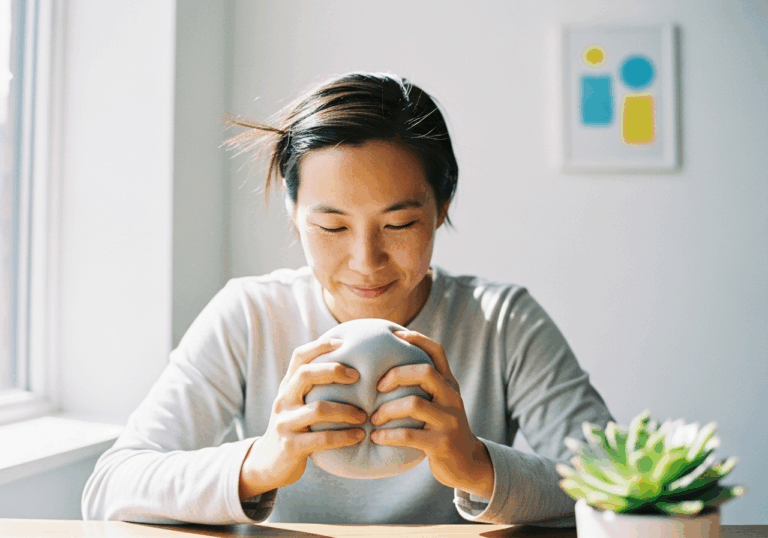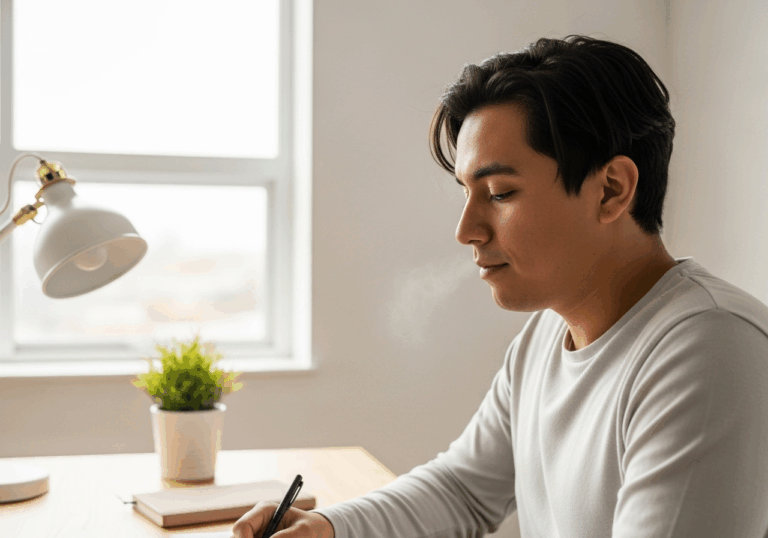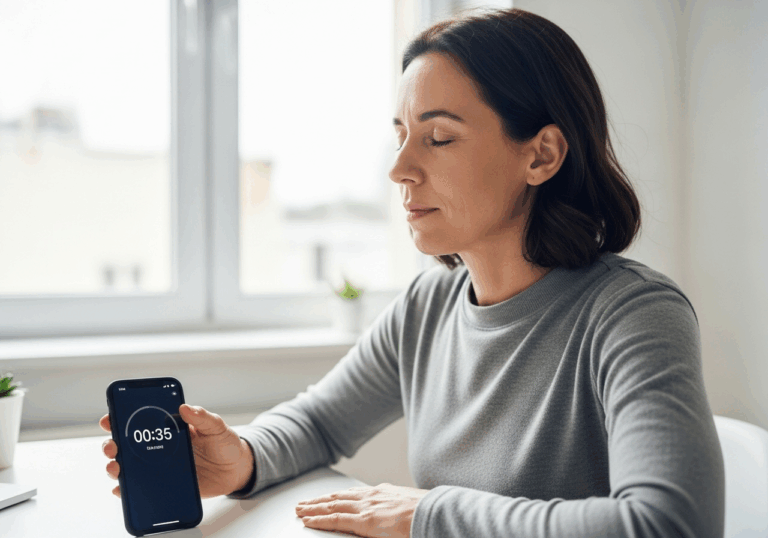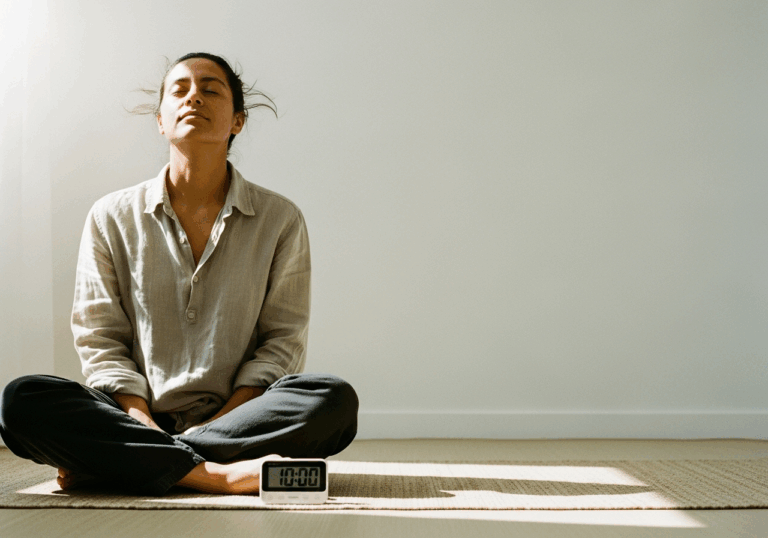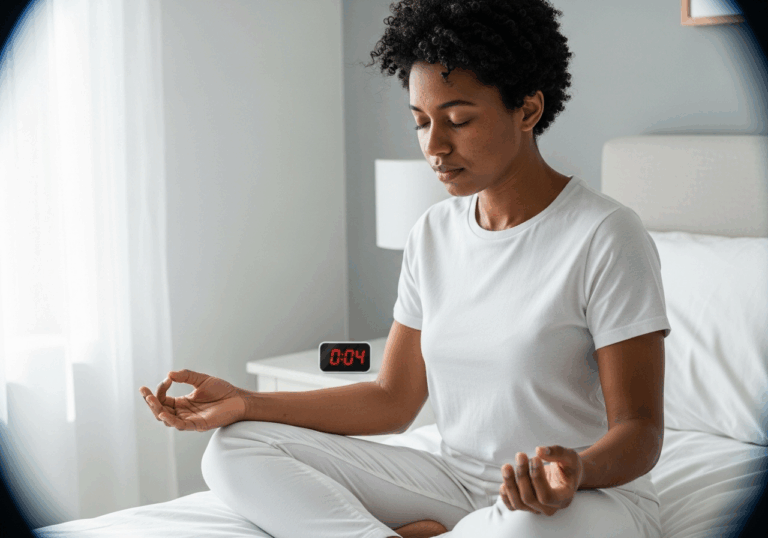Science-Backed Tips
Transform Negative Thoughts into Positive Outcomes
Visual defusion reduces anxiety by 30% through cognitive techniques.
📊 Did you know?
💡 Why It Matters
1️⃣
Visualizing thoughts as deletable objects can enhance emotional regulation, leading to improved mental health.
2️⃣
A 30% reduction in anxiety can significantly improve daily functioning and quality of life.
3️⃣
Implementing visual defusion techniques may reduce reliance on medication for anxiety management.
✅ Try These Micro-Tips
🎯
Practice typing out negative thoughts for 10 minutes daily, then delete them.
🎯
Engage in visual defusion exercises at least 3 times a week to reinforce cognitive distancing.
🎯
Incorporate mindfulness practices alongside visual defusion for enhanced emotional clarity.
🎯
Track your anxiety levels weekly to measure the impact of these techniques.
📚 The study
This finding is significant as it highlights the potential of visualizing thoughts as deletable objects, which can enhance emotional regulation and lead to improved mental health outcomes.
A 30% decrease in anxiety can dramatically transform daily functioning and overall quality of life, making this technique a valuable tool for those struggling with anxiety.
Moreover, implementing visual defusion techniques may reduce the reliance on medication for anxiety management, offering a more accessible and empowering approach to mental wellness.
As we continue to seek effective strategies for emotional regulation, the insights from this study pave the way for innovative practices that can help individuals reclaim control over their thoughts and feelings, ultimately fostering a healthier mindset.
❓ Frequently Asked Questions ❓
Learn more
What is visual defusion?
Visual defusion is a technique that involves viewing negative thoughts as if they are words on a screen that can be typed and then deleted. This method helps create psychological distance from those thoughts, promoting emotional regulation and reducing anxiety.
How does visual defusion reduce anxiety?
By visualizing negative thoughts as deletable objects, individuals can detach from these thoughts and lessen their emotional impact. Research shows that this technique can lead to approximately a 30% reduction in anxiety self-ratings.
How often should I practice visual defusion?
It is recommended to engage in visual defusion exercises at least three times a week to reinforce cognitive distancing. Additionally, practicing for 10 minutes daily can enhance the effectiveness of this technique.
Can visual defusion replace medication for anxiety?
Implementing visual defusion techniques may reduce reliance on medication for anxiety management. However, it is important to consult with a healthcare professional before making any changes to your treatment plan.
What are the benefits of visualizing thoughts as deletable objects?
Visualizing thoughts as deletable objects promotes mood-stabilizing psychological distance, which can enhance emotional regulation. This approach has been shown to significantly improve mental health and daily functioning.
How can I track the effectiveness of visual defusion?
You can track your anxiety levels weekly to measure the impact of visual defusion techniques on your mental health. Keeping a journal of your experiences can also help you identify patterns and improvements.
What is the difference between visual defusion and cognitive restructuring?
Visual defusion focuses on creating distance from negative thoughts by visualizing them as external objects, while cognitive restructuring involves changing the content of those thoughts. Studies indicate that visual defusion may be more effective in reducing anxiety than restructuring methods.
Can mindfulness practices enhance visual defusion?
Yes, incorporating mindfulness practices alongside visual defusion can provide enhanced emotional clarity and support overall mental well-being. Mindfulness helps individuals stay present and aware, which complements the distancing effect of visual defusion.
How long does it take to see results from visual defusion?
Participants in studies have reported a significant reduction in anxiety self-ratings after engaging in visual defusion techniques. While individual results may vary, many people notice improvements within a few weeks of consistent practice.
Is visual defusion suitable for everyone?
Visual defusion can be beneficial for many individuals experiencing anxiety, but it may not be suitable for everyone. It’s advisable to consult with a mental health professional to determine if this technique aligns with your specific needs.

